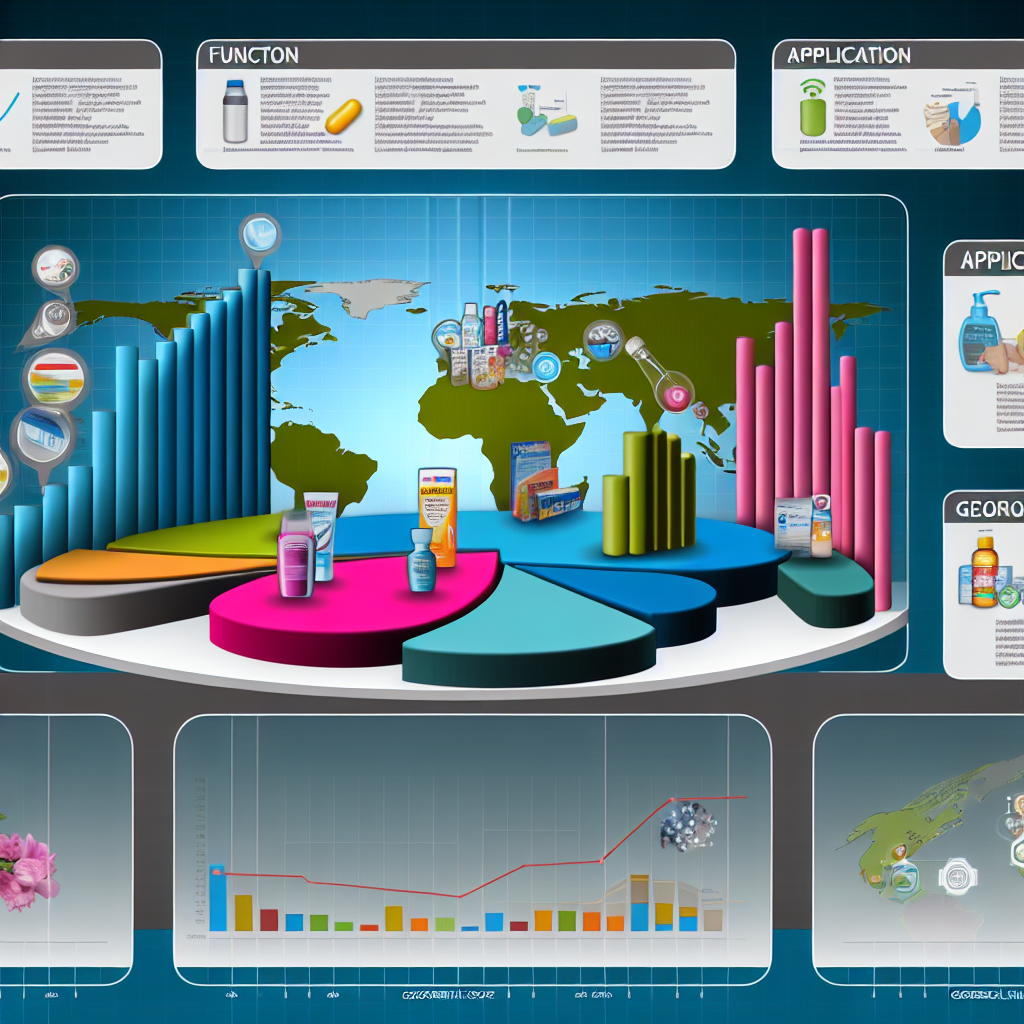Explore the global consumer healthcare market size by function, application, and region, with forecasts and trends analysis.
Global Consumer Healthcare Market Size By Function, By Application By Geographic Scope And Forecast

Table of Contents
- Global Consumer Healthcare Market Size By Function, By Application, By Geographic Scope And Forecast
- Understanding the Consumer Healthcare Market
- Market Size and Growth Projections
- Market Segmentation
- By Function
- By Application
- By Geographic Scope
- Key Drivers of Market Growth
- Challenges Facing the Consumer Healthcare Market
- Conclusion
Global Consumer Healthcare Market Size By Function, By Application, By Geographic Scope And Forecast

The global consumer healthcare market is a dynamic and rapidly growing sector, driven by increasing health awareness, aging populations, and technological advancements in medical care. This article explores the market size, functions, applications, and geographic distribution of the consumer healthcare industry, providing a comprehensive overview of its current state and future prospects.
Understanding the Consumer Healthcare Market
Consumer healthcare refers to products and services that allow individuals to manage and maintain their health outside of traditional healthcare settings. This includes over-the-counter (OTC) drugs, nutritional supplements, and personal health devices. The market is characterized by its direct engagement with consumers, offering products that promote wellness, prevent illness, and provide self-managed care.
Market Size and Growth Projections
The global consumer healthcare market has shown robust growth over the past decade. According to a report by Grand View Research, the market was valued at approximately USD 233.7 billion in 2019 and is expected to grow at a compound annual growth rate (CAGR) of 9.2% from 2020 to 2027. This growth is fueled by several factors including an increase in self-medication, the prevalence of lifestyle diseases, and the expansion of distribution channels.
Market Segmentation
By Function
- OTC Pharmaceuticals: These are drugs available without a prescription, used for common ailments like colds, allergies, and minor pains. OTC pharmaceuticals represent the largest segment in the consumer healthcare market.
- Dietary Supplements: This segment includes vitamins, minerals, herbs, and other products that supplement the diet. They are used to ensure adequate intake of essential nutrients and to reduce health risks.
- Personal Health Devices: These are tools used by individuals to monitor or manage their health, such as blood pressure monitors and wearable fitness trackers.
By Application
- Health and Wellness: Products aimed at maintaining or improving general health. This includes nutritional supplements and some OTC medications.
- Disease Prevention: Products designed to prevent specific health conditions, such as vaccines and certain nutritional supplements.
- Self-Care and Treatment: Products used in the treatment of minor ailments and chronic conditions, primarily encompassing OTC drugs and personal health devices.
By Geographic Scope
- North America: The largest market for consumer healthcare, driven by high healthcare expenditure and a culture of self-care.
- Europe: A mature market with stringent regulations but high consumer demand for wellness products.
- Asia-Pacific: The fastest-growing region due to rising health awareness and increasing disposable incomes in countries like China and India.
- Latin America and Middle East & Africa: Emerging markets with growing potential due to urbanization and economic development.
Key Drivers of Market Growth
Several key factors are driving the expansion of the consumer healthcare market:
- Increasing Health Awareness: More people are prioritizing health and wellness, leading to higher consumption of products that support health maintenance.
- Aging Populations: Older adults are major consumers of healthcare products, particularly in regions with aging populations like Europe and Japan.
- Technological Advancements: Innovations in healthcare technology, such as mobile health apps and wearable devices, are making health management more accessible to consumers.
- Regulatory Support: Governments are increasingly supporting OTC medications as a way to reduce healthcare costs, leading to more products being switched from prescription to OTC status.
Challenges Facing the Consumer Healthcare Market
Despite its growth, the consumer healthcare market faces several challenges:
- Regulatory Hurdles: The transition of products from prescription to OTC can be hindered by strict regulatory requirements.
- Consumer Misinformation: There is a risk of misinformation regarding the use and benefits of OTC drugs and supplements.
- Global Health Crises: Events like the COVID-19 pandemic can disrupt supply chains and alter consumer behavior unpredictably.
Conclusion
The global consumer healthcare market is poised for continued growth, driven by factors such as increased health awareness, aging populations, and technological advancements. While challenges such as regulatory hurdles and consumer misinformation exist, the overall outlook remains positive. As the market evolves, it will continue to offer new opportunities for businesses and benefits for consumers, making it a critical area for ongoing research and investment.
In conclusion, understanding the diverse functions, applications, and regional dynamics of the consumer healthcare market is essential for stakeholders aiming to capitalize on its growth potential and navigate its challenges effectively.








